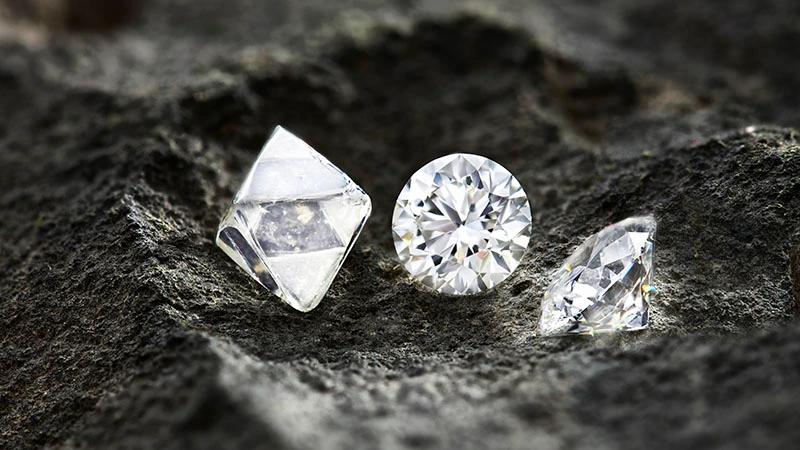HOW TO CUT A DIAMOND ?

Diamonds are one of the most sought-after and precious gemstones in the world. However, before they become the dazzling stones we know, they have to go through a meticulous process called diamond cutting. Diamond cutting is a multi-step process that involves shaping and polishing a rough diamond to create a beautiful gemstone. This essay will discuss the steps involved in cutting a diamond, from determining the cut to the final faceting of the stone.
The first step in the diamond cutting process is determining the cut. The cut is based on the natural shape of the rough diamond, the potential yield of the stone, and the need to remove any inclusions or imperfections. The yield of the diamond is crucial to its value, so the weight loss at each stage of the cutting and polishing process is carefully monitored. Computer-based analysis and optimizing systems are available to aid the cutter in planning the cut, which helps to ensure the maximum size is obtained from the stone.
Once the cut has been decided, the diamond must be shaped by cleaving or sawing. The diamond may first be cleaved along an existing internal plane to give a better shape to an irregular stone or to remove defects. Sawing a diamond to shape is done across the grain, using a thin blade impregnated with diamond dust and covered with linseed oil, which ensures the diamond powder sticks. Sawing is best carried out on well-shaped stones such as octahedrons. Sawing benches with up to 40 machines are monitored by a sawyer who continuously examines the stones during the process, in case any problems emerge.
Both sawing and cleaving processes may also be carried out using lasers. Laser cutting can saw a problematic stone in 15 minutes that would take a month to cut by sawing. However, laser cutting is not always the best or most cost-effective technique.
The next step is bruting, which involves shaping the diamond with another diamond on a high-speed lathe to produce the required shape. This was originally done by hand, by rubbing two diamonds mounted on bruting sticks. It required both physical strength and patience to shape the very hard stones. Today, bruting remains highly skilled work, but computer-controlled bruting machines have also been developed. Diamond cutting factories are becoming increasingly automated as technology becomes more sophisticated.
The last stage is faceting the shaped stone, which involves putting on precise angles that allow the stone to refract light. How well this is done is one of the elements that determine the quality of the stone. A facet is created by grinding the diamond at a precise angle on a polishing wheel known as a “scaife,” using diamond dust and linseed oil as the polishing agent.
First, the large facet at the top is ground until level and smooth. Then the major facets are created on the bottom, called the pavilion, followed by the large facets on top, called the crown. Then the pavilion facets are refined into more facets, followed by the crown facets. Each facet has to be precisely sized, shaped, and angled. A finished brilliant-cut diamond, which is the classic shape, will have 58 facets. The cutting of the final 40 facets may be done by a separate craftsman, known as a brillianteer. The stone will also have a faceted girdle round the center and a facet called a culet on its base.
In conclusion, diamond cutting is a meticulous process that involves shaping and polishing a rough diamond to create a beautiful gemstone. The process involves determining the cut, sawing or cleaving, bruting, and faceting. The use of technology and automation is becoming more common in the diamond cutting industry to increase efficiency and lower labor costs. With these advancements, we can expect more high-quality diamonds to be produced at lower costs in the future.
